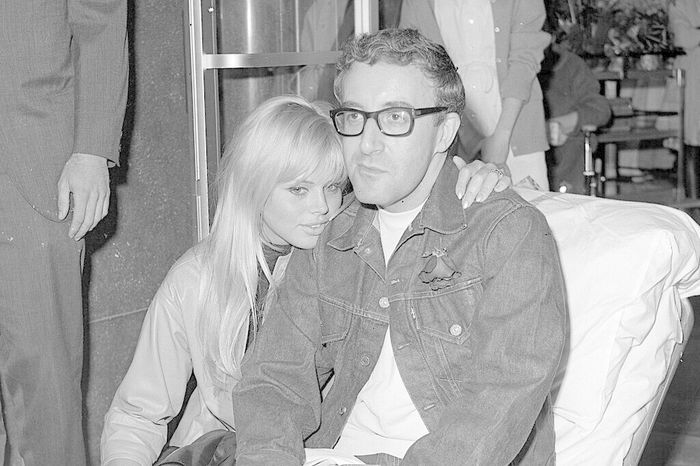It’s 7:26pm on a Saturday. Black tie donned and glass of champagne acquired, you waddle over to a few friends. A shouting contest masquerading as a civilised conversation ensues. Your DoS, somewhat inebriated by this stage, passionately ushers the crowd into the dining hall. SNAP! What the bleedin’ ’eck was that? The inevitable “smile one more time for me, guys. Cheers,” not only confirms that a stun grenade hasn’t been pelted at you (phew), but it also draws your attention to a member of one of the University’s most undersung demographics: its student photographers.
“Student photographers are seemingly ubiquitous”
Student photographers are seemingly ubiquitous. May Balls, Union debates, graduation ceremonies, drunken subject dinners – you name it, they’re single-handedly ensuring that we are well-equipped with photos we can laugh (or cry) about in 30 years’ time. Their wide-ranging work is something unique to Cambridge, if not university settings in general
The photographic autobiography that Susie Kirsten third-year Phys NatSci and seasoned photographer, rehearsed to me on a sofa in Emma café squares with this. Wanting experience and, of course, to continue developing her passion for photography, Susie “accepted everything” in first year. This “everything” included some heartwarming shots of a doting couple, a ‘beauty of women’ photoshoot, collaborating with Emma’s Femsoc, and some intimate portrayals of various performers and some not-so-intimate photos of rambunctious finalists at St John’s May Ball 2023.
“With such situational diversity, however, comes the requirement to adapt and improvise”
With such situational diversity, however, comes the requirement to adapt and improvise. Susie noted that one photographic technique – light-streaks, say – can be used to convey a surprisingly large amount of different moods and themes. Regarding light-streaks, Susie said that she “can capture a still image of the person by the quick fire of the flash, followed my motion of the camera to get light streaks from the longer exposure around the person. I can use long exposure to show chaos, I can use it to show the flow in musical situations.”
Ami Khawaja, a second year Historian at Caius embarked on such a mission while snapping some lawyers letting loose at the University’s Law Ball. Ami attests strongly to the value of a photographer's patience. After some amicable disagreements, Ami “worked together [with the students] and tried different things like angles and lighting until we both came to a solution we were happy with.” In addition to gaining some negotiating skills, some wider realisations were born out of this process of adjustment: “it’s so fascinating the differences a slight angle can make to someone’s confidence.”
“This emotional shift speaks to the unique insight into our behaviour photographers can gain, rendering them amateur anthropologists”
Confidence. For many a nervous teenager that noun will seem rather misplaced in the context of photography. That Ami mentioned this emotional shift speaks to the unique insight into our behaviour that photographers can gain. Niamh Cafferty, second year lawyer, had a similar anthropological experience while documenting Far Away at the ADC a few weeks ago. She found it “interesting seeing how some people take to being in front of the camera like it’s second nature,” whereas “others are far more critical of themselves.”
Susie agreed, but also noted that the way individuals’ behaviour changes around cameras depending on such factors as room size, number of people, and ambience is also fascinating: “people go into an event with a bit of a mask on […] they feel the need to have small-talk and that’s awkward,” but, as time progresses, “they know they’re being watched, [so] their posture changes etc.” At an Association of Veterinary Surgeons dinner that occurred in late January, for instance, Susie observed that “During the drinks, people would talk normally and ask for a photo”, she found, whereas during the dinner some adjustment was necessary: “as I walked around, the closer I came I found I had to switch to a different lens to capture some genuine smiles,” for “as I walked over, suddenly [individuals’] conversations were hilarious.”
Human nature, eh? This emphasis upon how photographers observe and capture us conjures up an image of the solitary photographer gaining unfathomable wisdom. Susie, Ami, and Niamh, however, noted in varying ways that interactions with other photographers can prove rather useful. Susie was unequivocal about her gratitude for her college father, who “helped [her] to get into photography, and helped me get my first jobs.” College parents, nurture your children: it could change lives! Similarly, Niamh “bonded over art styles and the fun of [photography]” with a fellow photographer at a Churchill LGBTQ+ formal, which attests to the value of comradeship in artistic contexts.
Cambridge’s student photographers, like us all, are a diverse bunch. From May Balls to college archives, their willingness to follow their interests and develop their passion for photography is admirable. Why? Because it results in those ephemeral, seemingly insignificant moments of our time here being frozen in time, preserved for a merry or not-so-merry nostalgia sesh. Their art requires them to observe and consider the minutiae of our behaviour, which are invariably lost amid the hustle and bustle of 21st century life. Say thank you to a photographer one more time than you typically would after leaving that dining hall, or downing that pint.
Want to share your thoughts on this article? Send us a letter to letters@varsity.co.uk or by using this form


